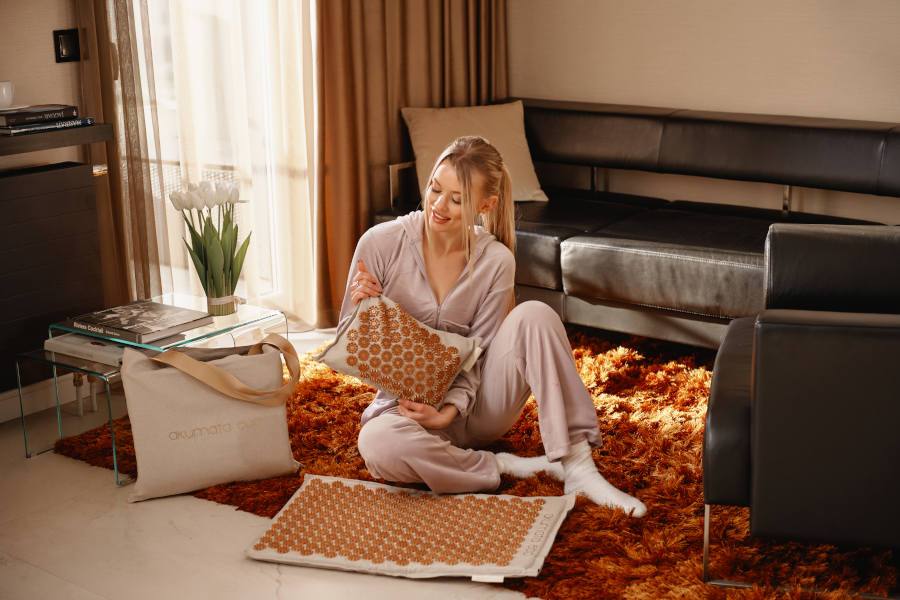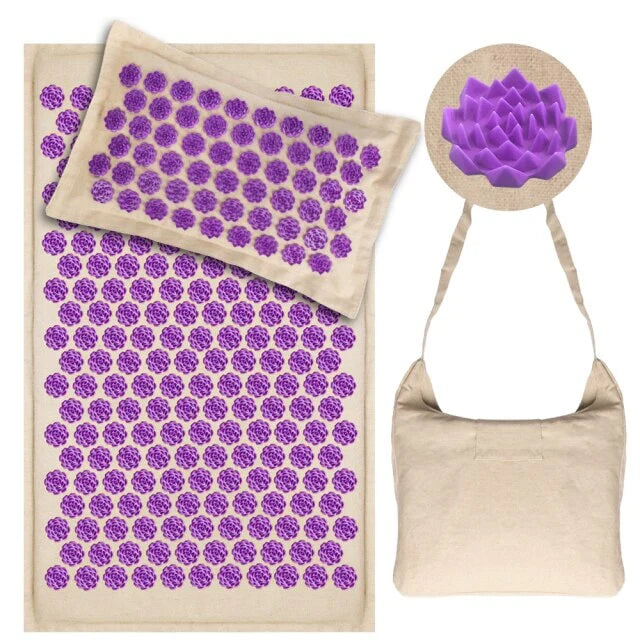Shantala massage is a baby massage in Ayurveda and an art practiced for millennia in southern India, which accompanies the child through the first years of life.
What is Shantala massage?
This massage can be performed on a daily basis, traditionally from the 7th day of life to the 28th day, with a ball of natural oil paste (flour and oil) rolled directly onto the newborn's body.
It can be continued beyond the first month with a vegetable oil with emollient and protective properties, until the child is 5 or 6 years old, before your child decides to massage himself.
We recommend using first cold-pressed, organic vegetable oils if possible (olive, sunflower, rapeseed, jojoba, sesame, coconut, etc.). You can test the chosen oil to make sure your child is not prone to an allergic reaction.
To do this, apply a small amount of oil to your child's toes, leaving it on overnight, and then checking for a reaction the next morning
How do you do it?
Once you've warned your baby with words and gestures, you can coat your hands with oil. All you need is a small towel to settle your child and another to wipe off any excess oil. You can heat the oil in a bowl in a bain-marie, but beware of the risk of burns.
There are several ways to position yourself for the massage. You can sit with both legs stretched out and facing you. You can then position your baby facing you, on your legs. You can also choose to sit cross-legged, with your baby facing you. The most important thing is that both you and your baby are comfortable.
The room should be warm enough for your baby to keep warm. Mornings are often the best time for a Shantala massage, but it can also be after bath time, or before bedtime.
What are the right movements?
Using downward gliding movements and medium pressure, you can massage your child's head and face, chest, arms, legs and feet. Initially, this massage lasts only a short time, but can be extended as your child gets used to it.
Shantala massage involves specific movements, but it's also relatively intuitive, so it's not the technique that counts. What's important is to listen to your baby, observe whether he or she is receptive, identify what he or she likes and dislikes, and then provide a massage that corresponds to his or her needs and preferences.
How does this practice bring well-being to babies?
In addition to strengthening the bond with your child, massage stimulates your baby's various systems (nervous, lymphatic, circulatory, digestive, immune, respiratory, hormonal, etc.) and stimulates the baby by bringing vitality.
Through massage, your child becomes aware of his or her body schema and bodily limits, muscle tone is strengthened, and skin is softened and nourished.
Through touch, by reproducing the sensations of a familiar environment, Shantala massage aims to bring relaxation and soothing. As a transition between the in-utero world and the earthly world, this massage can reassure babies whatever the birth process.
With practice, it can improve the quality of your baby's sleep and activate the metabolism by stimulating the appetite, promoting digestion and elimination, and relieving certain ailments (colic, constipation, gas, etc.).
Your child's senses will be put to good use, as he opens up to new perceptions and sensations and discovers his own identity.








